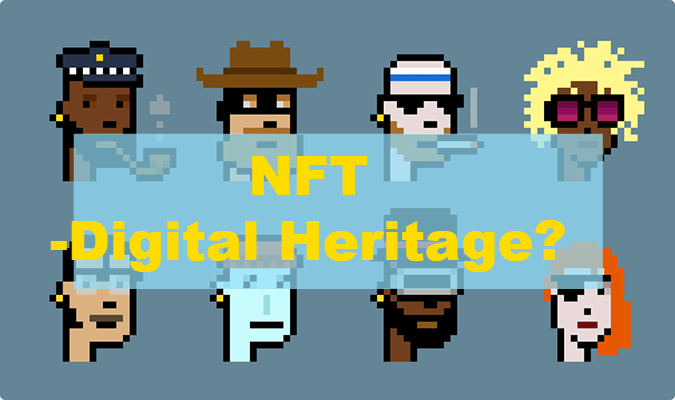Will digital illustration become the artistic legacy of a new generation?
Image: A dynamic illustration of bitcoin, with a text section that reads: eat ethrito, buy bitcoin. Image by Mirjan Hipolito. Used with a CC BY-ND 4.0 license.
When the Z century began with the full expansion of digital media, digital artwork, including digital illustration, also rose wildly. This marked a new revolution in art creation. Driven by social media, sharing artworks on the Internet has become an important way for the younger generation to express themselves. This art form not only broadens the boundaries of artistic creation, but also provides a broader platform for artists to display their work. With the wide dissemination and high prices of various virtual art collections, can we consider them as artistic heritage?
In this post, we'll look at Instagram and NFT as examples of how they are driving digital illustration and analyze whether digital painting can be called an artistic heritage.
This is despite Instagram's push to give young artists unprecedented exposure for digital illustration. Instant feedback from platforms such as likes and retweets can certainly give artists a short-term sense of fulfillment and traffic, but they don't necessarily reflect the depth and value of the art.
However, it is important to consider that the platform's operating algorithms prioritize content that conforms to mainstream aesthetics and personal preferences, resulting in the creation of works that are more “audience-friendly”. Works rich in individuality, independent thought, or with critical overtones are drowned in the mass of homogenized works. But it is undeniable that ins this global dissemination not only expands the influence of the work, but also gives it the opportunity to become a common cultural memory of a certain generation, representing the current artistic styles and trends.
Post: A illustration about a man walking down the road carrying a white winged contraption. Post by: benbeirreuge
“Is this a bubble or a future artistic revolution?”
Paintings are tangible cultural heritage that often carry the history and aesthetics of an era. But can digitally painted artwork be called cultural heritage in the future? I think many art industry practitioners will have the same question as me. The first question is: the market for digital illustration and NFT has experienced explosive growth in a short period of time, with many works being traded at high prices. Could this phenomenon be a market bubble? Let's start with the possibility of a bubble.
Image: A yellow square reads NFT and a digital version of a plaster of David statue is placed on it. Image by: Envato Elements pic. Used with a CC BY 4.0 license.
NFT artwork prices soar, many times not because of the profound artistic value of the work itself, but rather speculation by speculators. The buyer may not be motivated by a love of art, but rather expects to make a profit by reselling it at a high price. This irrational price rise reminds people of many “bubble” events in history, such as the Internet bubble, real estate bubble and so on. Once the market heat is over, will the art market return to calm?
On the other hand, optimists believe that NFT and digital illustration represent a technological innovation in the art market. Blockchain technology offers a whole new way of authenticating and transacting art, and in the future may allow us to collect art in a completely different way. Although the market seems a bit overheated now, in the long run, truly valuable works will remain and the market will slowly return to rationality. The most popular artist was Beeple in 2021 was the digital work 《Everyday: The First 5000Days 》sold for $69 million on the Christie's platform. This is where digital illustration pushed to the pinnacle of art collecting. Pak as a digital artist in 2021 sold for a total of $91 million, setting an auction record for a digital artwork.
Video: The work, titled Everydays - the First 5000 Days, sold at auction for nearly $70 million, making it the first time in the history of a major auction house to sell a work that did not exist. Video by: BBC NEWS.
We may be in the early stages of this digital art trend and the future is still full of unknowns. But one thing is for sure, no matter how the market changes, digital illustration and NFT have revolutionized the way we think about art and collecting. The “game” has just begun!
Post: Digital art ‘Metarift’ by Pak. Post by nftnow.
There are many challenges in the process of becoming. First, the easy reproducibility and rapid dissemination of digital works make originality difficult to define, and many illustrations may be imitated and copied in large numbers within a short period of time, resulting in the loss of protection of artistic value. Secondly, with rapid technological updates, certain digital formats and platforms may become obsolete, making it impossible for some works to be effectively preserved and passed on.
These are all questions that need to be carefully thought about and addressed in the process of cultural heritageization of digital illustration.
So do you think that digital artwork and digital illustration will become artistic heritage?







